HILT visits California, D.C.
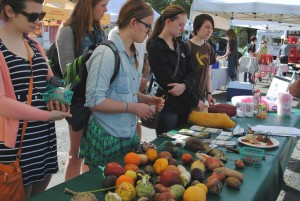
This year, two High Impact Leadership trips set off to their destinations over spring break.
One trip went to Washington D.C. to learn about environmental policy, while the other went to California to learn about sustainable agriculture and organic farming. Both groups came back filled with knowledge, ready to implement change – though they could have stayed longer.
This year there were two HILTs, when in years past there had only been one. The HILTs are funded by the SGA sustainability fund; this year, the large sustainability fund helped support the second trip. Dr. Ken Foster, advisor for the Washington D.C. HILT hopes to see two or maybe even three HILTs next year. There should be no lack of applicants as the cost is only $200 per student.
The California Trip
Joleen Baker led the group of 15 students visited Sacramento, the San Francisco Bay Area, Berkley and Marin County. In each of these places they went to many different organic farms, farmers markets and organic restaurants. The trip allowed them to go to farmers markets and see farmers they had met the day before.
“It was pretty all-encompassing,” Farmer said. “They were learning about the industry itself, not just the growing aspects. Students were able to get a bird’s-eye view of how the organic food industry works.”
Baker said People often assume organic can’t feed the growing population when in reality conventional farming practices are so harmful the pesticides kill the soil and makes it hard for other crops to grow.
“The push towards organic is controversial,” Baker said.
Their first day in California was spent at the Sacramento Farmers Market, which is the biggest in the state.
“It served as an introduction of the whole trip and got people into the mentality of what we were talking about,” Baker said. “Its cool to see all the organic options. Things you don’t see in Minnesota even in peak season.”
They also participated in Pedal to Plate Culinary Bike tour where they pedaled their way to three different organic restaurants on a unique uni-bike.
The next day they went to Full Belly Farm, which is an organic farm located in Capay Valley where they learned all about their sustainable farming practices.
“It was absolutely breathtaking,” Baker said.
Full Belly Farm is a part of the Farm-to-Fork initiative, which means the food from the farm is sold to local restaurants to use in their dishes and farmer’s markets. In fact, many of the places visited by the students on the HILT were a part of this initiative.
“It was really cool to see everything they were doing for the sustainability of their farm,” Baker said.
The students also got to pick their own asparagus out of the field that they would have for dinner that night.
“You hear farm fresh,” Farmer said. “You don’t get any more farm fresh than that.”
Milking cows and using that milk to bottle-feed lambs was a highlight for many of the students on the trip.
The next day was spent at Soil Born farms, where they got to learn about and see urban agriculture.
“The cool thing about it is that it’s in the middle of a city,” Baker said.
Baker said this was a day when they got their hands dirty, weeding and laying down wood chips.
The farmer at Soil Born Farm didn’t go to agriculture school, in fact he is a former artist. It was interesting for students to see his point of view since he didn’t have the traditional background that many farmers have.
“He said ‘its just a different palate,’” Farmer said. “It was interesting to see how each organic farmer farms differently. You don’t just throw a seed in the ground.”
Another favorite part of the trip was an invitation into the home of Lydia Kindheart, an award-winning organic vegan chef, for a meal.
“She’s a pretty big deal,” Baker said. “Her morals are so sound. She brought everybody to tears. She had a lot of faith in us.”
Baker thought it was amazing to see how you could have such a normal meal even while cooking organically. Samantha Ferguson, who went on this trip, said she has started watching her diet.
“I never used to have any thought cross my mind when food was in front of me,” Ferguson said. “Now I look at labels. I’m a lot more aware of what I was putting in my body.”
The next day was spent in Marin County, where they went to a farmers market, where they actually came across members of Full Belly Farm. The farmers recognized them from when they visited their farm.
“It was so cool to see it full circle from production to harvest to market,” Baker said. “For them to recognize us was really rewarding.”
Then they went to Paradise Valley farm where they learned many things about their farming practices. A unique feature of this farm was they make their own compost tea and use it to water their fields.
“With the huge drought they’re having in California it was cool to learn about how they are dealing with that,” Baker said. “It’s all about rationing.”
The next day they went to Muir Woods in the Redwood Forest.
After the trip, students noticed even more how a sustainable and organic society can be achieved.
“It was cool to look back and see that this is possible to have an organic lifestyle,” Libby Hardwick said.
Farmer noticed that some students had dietary restrictions and it was the first time they didn’t have to restrict themselves at restaurants. They could order anything they wanted. He thought that was great because they don’t often get that here in the Midwest.
“It was cool that vegetarian or organic options are a given,” Baker said. “Being back and realizing how far this entire region has to come is hard. We could do a lot more than we are now.”
Sustainable agriculture and organic farming were the main focuses of the California trip. Baker chose California for a number of reasons, one of them simply being the fact that California’s weather allows organic farming practices year round. Also, Sacramento is the farm to fork capital of the country.
The California group hopes to discuss with Dining Services about more vegan options as well as local and organic foods.
“It really fired me up to come back here and apply what I learned,” Liebig said. “I made a lot of good friends. It was really refreshing to see new faces. I think I found my people on the HILT trip.”
Baker wants to work on an organic farm either in northern Minnesota or in California and establish an organic and sustainable movement.
“I’m tearing up thinking about the trip if that says anything,” Baker said. “It was the greatest trip of my life. It made me realize what I want to do in the future and that it’s possible. I can’t even articulate how much it meant to me.”
The Washington D.C. Trip
Kaite Black and Erica Bjelland were co-leaders on the Washington D.C. trip. They were in charge of the schedule, leading discussions and directing everybody. Ken Foster and Anne Savereide, the advisors, were there to provide advice to students if needed.
On the Washington D.C. trip, 12 students learned about how change is made on different levels of environmental policy by looking at places working with policy at the federal, community, and individual level.
“This trip showed me how important it is to be knowledgeable about the government,” Nicole Schmiedt said. “Also, how you can influence them and make changes in policy. Now it all seems a lot more real and relevant. I see the importance in staying up to date.”
Students had the chance to see policy change from the ground up.
“The idea that there is a trip completely devoted to policy and how we can make our environment better seems pretty unique to me,” Sarah Liebig said. “We got a full circle of all the systems that try to make the environment better through policy. To be able to see them in succession and compare them was a pretty unique opportunity.”
First, they went to the Aldo Leopold Foundation in Wisconsin, which allowed students to see policy at an individual level. Aldo Leopold was a farmer and conservationist in the early 1900s. He is known for how he worked with land that was basically destroyed by its previous owner by planting trees, in order to revive the soil.
“He was a visionary in his time,” Schmiedt said.
The group was unexpectedly snowed in for a night in Ohio.
“Ohio was an unanticipated stop,” Savereide said. “Cleveland is a beautiful place. Who knew?”
When they finally arrived in Washington D.C., they visited Citizen’s Climate Lobby.
“They believe it is economically beneficial to people to be more sustainable,” Liebig said. “CCL had an economic approach rather than scientific approach.”
The same day they also visited Earth Justice, an environmental law firm that deals with around 300 cases per year and wins 50 of them on average. Their priority is the conservation of nature and they spend a lot of their time lobbying.
“Their tagline is ‘because the earth needs a good lawyer too’,” Savereide said.
That night they spent time with students from the United Nations Association at Georgetown.
“We talked to them about the connection between human rights and justice and environmental college,” Schmiedt said. “It was nice to be able to talk to people our age.”
The next day they toured the capitol and met with two of Collin Peterson’s representatives. Students got to have a conversation with them first hand about environmental policy, most of them for the first time.
“I think we were all a bit flummoxed and didn’t know what to ask,” Liebig said. “I’d never seen politicians talk about environmental issues.”
Later that day they had a meeting with the American Association for the Advancement of Science, which is a nonprofit that works to “bridge the gap between the scientists and the rest of the world,” Liebig said.
The next morning senator Al Franken joined them for breakfast, and that afternoon the group met with the Environmental Protection Agency. They were able to talk to two departments: one was the Office of Sustainable Communities; they talked about how communities are built and how to improve their quality of life. They also talked to the Office of Public Engagement, which deals with political application of these concepts.
“They showed how an idea can go to action,” Ashley Thompson said, “The EPA let us look into those nitty gritty processes.”
The last place the group visited was Oberlin Ohio, which turned out to be most of the students’ favorite part of the trip. They met with the Overland Project’s board to talk about their process. Then they went to Oberlin College to look at how they implement sustainability and they talked to the president and vice president of their environmental club. Oberlin wishes to create a more sustainable community by using existing resources. Students learned that a project like this takes a lot of time and effort.
“Its not sort of a snap your fingers and you can create a sustainable city in four years,” Liebig said.
Oberlin College is not much bigger than Concordia, making it easy for the students on the trip to realize Concordia could be taking these initiatives too.
Its not that everyone is a die-hard environmentalist there,” Liebig said. “They just realize they are able to live comfortably in a sustainable way.”
Many of the students enjoyed their visit to Oberlin College because it provided them with an opportunity to see change in a smaller setting. Schmiedt enjoyed looking at how we can make change in our own community.
“They were able to break it down to such a small level,” Thompson said. “They made it very tangible. I liked seeing things we could do in Moorhead.”
“I think something that is really unique about the HILTS is to bring action back to campus, Bjelland said. “Right now were looking into getting a free store on campus”
Bjelland said Oberlin had a free store where people could bring anything they wanted. The point of this is to reuse other people’s waste. She hopes to convince Concordia to adopt this idea.
“Its kind of like the idea that ‘one man’s trash is another man’s treasure,’” Bjelland said. “We’re still in the beginning stages but we’re determined to make it happen.”
All in all, the group gained valuable insight to the world of sustaining our civilization from a political standpoint.
“Sustainability slips under the rug sometimes,” Thompson said. “It was cool to see there are people that are so passionate about it.”
The HILTs are unique in the way that they encourage not only learning but implementing change when returning to campus. These trips hope to promote student leadership, tackling large-scale ideas, meeting interesting leaders and activists and have fun in the meantime.
“The HILT was all lead by students,” Ferguson said. “That really shows leadership in a lot of ways.”
Savereide said there was a good deal of singing and jam sessions in the car, and Farmer also recalled bonding moments.
“Without question there are people who are going to stay friends throughout their time at Concordia if not longer,” Farmer said. “You don’t get that in a classroom.”
There were a wide variety of students, freshmen through seniors, with different majors who went on the trips.
“The HILTs offer students the unique opportunity to just learn from each other,” Hardwick said. “It was cool to put our heads together and learn.”
Ferguson believes more students should apply for a HILT.
“Everyone came from different background but we all got to come together,” Ferguson said. “We got to have experiences that not many people will get to have. The trips are a unique experience for anyone. Anyone can benefit from it.”


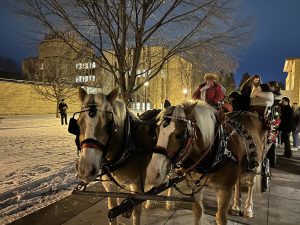
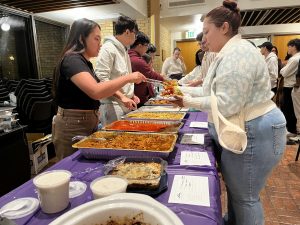
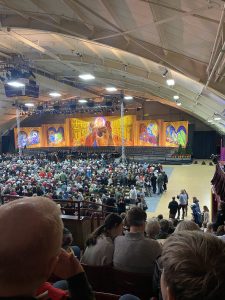
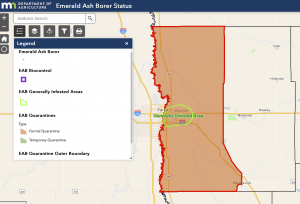
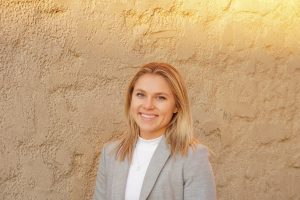
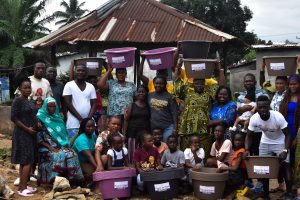
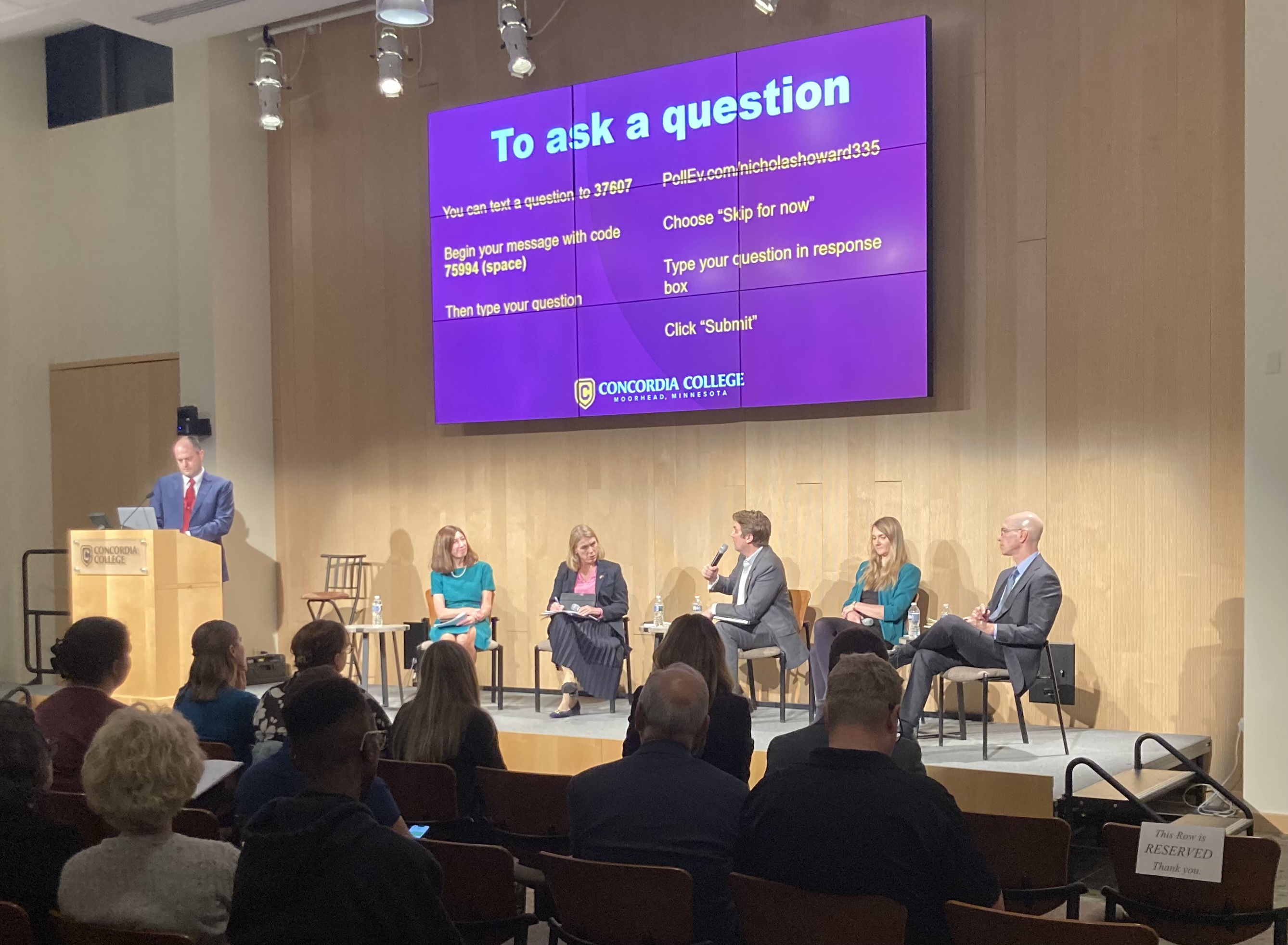
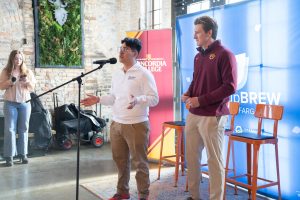
Be First to Comment